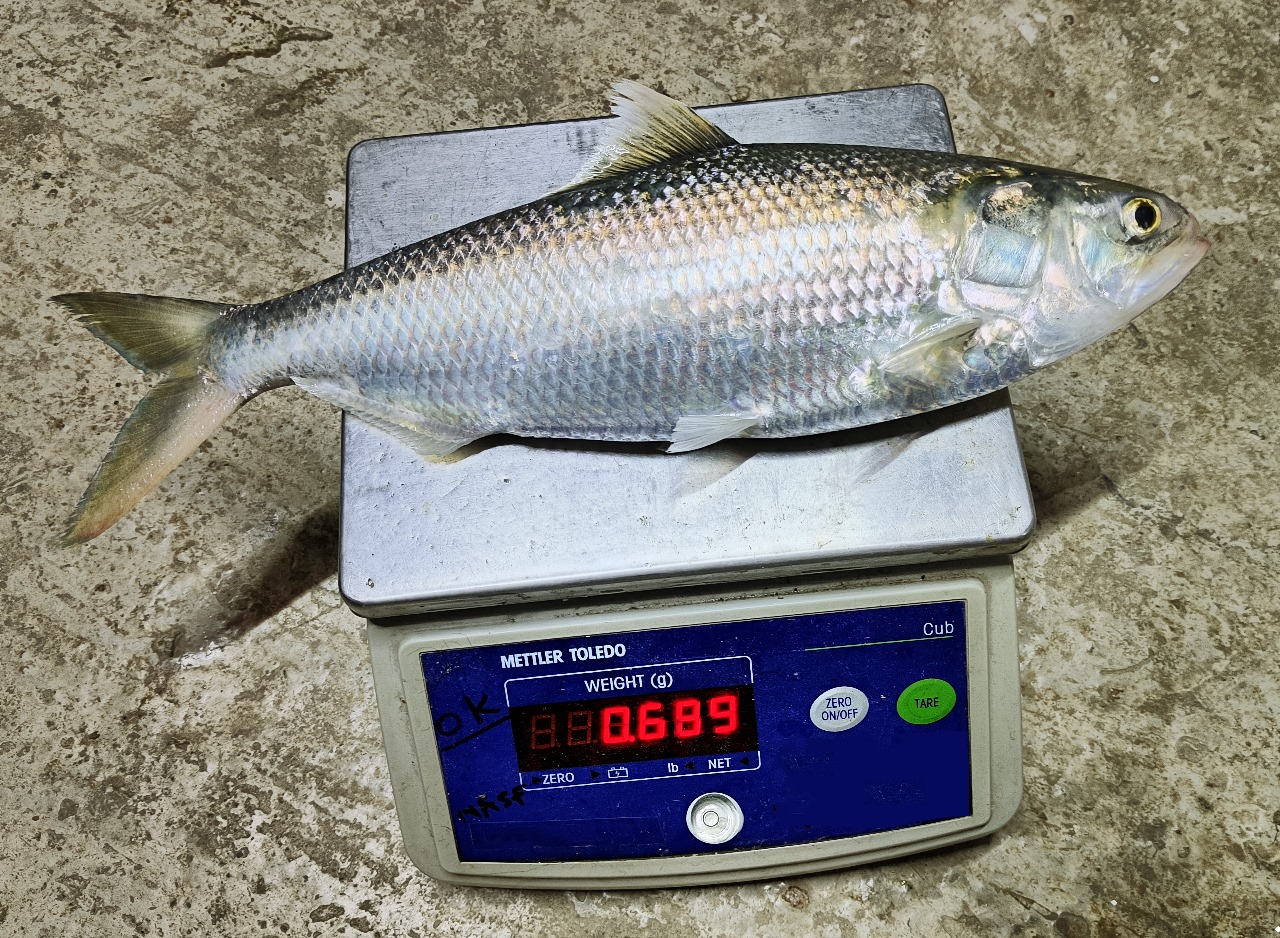Hilsa, the coveted fish of Southeast Asia has always attracted the attention of researchers for a long time which led to a recent sincere attempt to bring the fish into aquaculture through support from various research projects sponsored by two multi-Institutional projects under ICAR-NASF.
Under the ICAR-NASF project phase II, Hilsa broodstock development was a major objective. In this direction, juveniles of Hilsa were reared in ponds at various locations like freshwater zone at Rahara (ICAR-CIFA), brackishwater zone at Kakdwip (ICAR-CIBA) and intermediate zone at Jamitya village in Kolaghat, Midnapur East, West Bengal (ICAR-CIFRI).
The broodstock ponds are fed with water from River Rupnarayan, a tributary of river Ganga at Kolaghat. Good growth and survival was recorded at all the two pond culture facilities there. During recent monitoring, a fish of 689 g (43.6 cm) was recorded at Kolaghat, which is gained during rearing for three years. This attainment of size is the highest reported from any such attempt in India. The growth of pond reared Hilsa is better to that of the open water, revealing that there is a possibility of aquaculture of Hilsa.

Fishes were fed with their preferred food of live zooplankton in addition to the specially designed feed. Water quality is almost freshwater with salinity of about 0.4-0.5 ppt and conductivity of about 800-1000 µS/cm. Water is alkaline (pH 7.4-7.5) with sufficient dissolved oxygen (7.4-7.5 mg/l).
The success story highlights the prospects of successful captive Hilsa culture if ponds are properly managed.